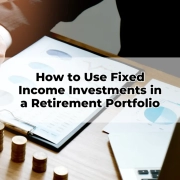Investing Your Superannuation in Property: Is It Worth It?
Table of Contents
ToggleSuperannuation, designed to support Australians in retirement, offers a wealth of investment opportunities, with property emerging as a popular choice. More Australians are now considering how they can utilise their superannuation to invest in property. This strategy has gained traction in recent years, particularly within the Self-Managed Super Fund (SMSF) sector, where individuals have greater control over their investment decisions.
Property investment within super can be highly appealing, offering both capital growth and rental income. However, it also presents challenges that must be carefully managed. As part of a well-structured financial plan, investing your superannuation in property could lead to significant long-term benefits, but it’s not without risk. This blog post explores the intricacies of investing superannuation in property and whether this approach is right for your retirement planning.
Understanding Self-Managed Super Funds (SMSFs)
SMSFs offer individuals the ability to take full control of their superannuation investments. Unlike traditional superannuation funds, which are managed by large institutions, SMSFs are privately managed by the members. This allows for a more hands-on approach, with the ability to invest in a broader range of assets, including property.
Property investment via SMSFs is attractive because it enables members to leverage their retirement savings to purchase a property, which is typically out of reach within standard super funds. However, SMSFs come with their own set of responsibilities and regulatory requirements. Managing your own fund requires an understanding of compliance, investment strategy, and the long-term implications of property as part of your super portfolio.
The Appeal of Property Investment within Superannuation
For many Australians, property has always been seen as a stable and tangible asset. The ability to own real estate within superannuation has particular appeal, especially given the long-term growth potential of the property market. Rental income from the property can provide a steady income stream during retirement, while the property itself can appreciate in value over time.
Additionally, property is perceived as less volatile compared to equities or other market-driven investments. For those seeking a level of security and a real asset in their superannuation portfolio, property investment may seem like the ideal solution. However, it’s essential to balance this appeal with a realistic understanding of the associated risks and responsibilities.
Types of Property You Can Invest in Through Superannuation
When considering property investment through your SMSF, you typically have two primary options: residential or commercial properties. Residential property involves homes, apartments, or rental units, and may seem like a natural choice for many investors due to familiarity. Commercial property, on the other hand, includes offices, retail spaces, and industrial buildings, which may offer higher rental yields but come with additional complexities.
The suitability of each type depends on your investment strategy and long-term goals. Commercial properties may provide better cash flow but can be riskier due to longer vacancy periods. Residential properties are often viewed as more stable, but returns might be lower compared to commercial investments. Deciding between these types requires careful consideration of your risk tolerance and financial objectives.
Benefits of Investing in Property via Superannuation
There are significant tax advantages associated with investing in property through superannuation. For example, rental income from a property held in an SMSF is taxed at the concessional superannuation rate of 15%, compared to higher personal tax rates. Additionally, if the property is held until you enter the pension phase, any capital gains on the sale of the property are generally tax-free, offering significant savings.
Furthermore, property provides diversification within your superannuation portfolio, spreading risk across different asset classes. Adding property to a mix of equities, bonds, and cash can provide a balance between growth and stability, particularly in times of stock market volatility.
Risks and Challenges of Property Investment in Superannuation
While property investment can provide solid returns, it is not without risks. One of the key challenges of investing in property through superannuation is liquidity. Property is an illiquid asset, meaning it can take time to sell and convert into cash, which may pose problems if funds are needed quickly during retirement.
Additionally, the property market is not immune to volatility. Economic downturns, changes in interest rates, and shifts in market demand can all negatively impact property values and rental income. For SMSF members relying heavily on property investments, these fluctuations could have serious implications for their retirement savings.
Borrowing to Invest in Property Through Your SMSF
Investing in property through your SMSF often requires borrowing through Limited Recourse Borrowing Arrangements (LRBAs). This allows the SMSF to borrow money to buy property while limiting the lender’s claim to just the property itself, rather than the entire SMSF.
While borrowing can increase your purchasing power and enable you to acquire higher-value properties, it also magnifies risks. If the property market underperforms or if rental income is lower than expected, the SMSF could struggle to meet loan repayments. It’s crucial to carefully assess the potential for both risks and rewards before deciding to borrow within your SMSF.
Superannuation Rules and Regulations for Property Investment
The Australian Taxation Office (ATO) has strict rules regarding property investment within SMSFs. The property must meet the sole purpose test, meaning it must be purchased solely to provide retirement benefits to fund members. Personal use of the property is not allowed, and it cannot be rented to related parties unless it is commercial property leased at market rates.
Non-compliance with these rules can result in severe penalties, including the loss of your SMSF’s concessional tax treatment. It’s important to understand all the regulatory requirements and ensure that your SMSF adheres to them when investing in property.
Property Investment Costs and Considerations for SMSFs
Investing in property through an SMSF involves a variety of costs beyond the purchase price. These can include legal fees, stamp duty, property management fees, and maintenance expenses. Additionally, if the property is financed through borrowing, interest on the loan and ongoing loan servicing costs will impact the overall returns.
These expenses need to be carefully considered when planning your property investment strategy, as they can reduce the amount of rental income and capital growth that ultimately contributes to your retirement savings. Failing to account for these costs can lead to lower-than-expected returns or cash flow issues for the SMSF.
Exit Strategies: What Happens When You Sell Property in Your SMSF
At some point, your SMSF may need to sell the property, whether to fund your retirement income stream or as part of your estate planning. Understanding capital gains tax (CGT) implications is crucial. If the property is sold while your SMSF is in the accumulation phase, CGT may be payable at a reduced rate of 10%. However, if the property is sold in the pension phase, it is generally exempt from CGT.
Planning your exit strategy well in advance can help maximise the financial benefits of property investment. Deciding whether to sell the property or hold onto it into retirement requires careful consideration of your financial needs and the property’s performance over time.
Alternatives to Direct Property Investment in Superannuation
If direct property investment seems too complex or risky, there are alternatives, such as Real Estate Investment Trusts (REITs) or property funds. These allow SMSF members to invest in property without the challenges of direct ownership, such as property management and liquidity concerns.
REITs offer exposure to both residential and commercial property markets while providing the advantage of liquidity, as they are traded on stock exchanges. Investing in property funds allows for professional management of the property assets while still benefiting from the stability and growth potential of the real estate sector. These alternatives may offer a more diversified and manageable approach to property investment within superannuation.
Conclusion
Given the complexities involved in SMSF property investment, seeking professional financial advice is essential. An experienced Toowoomba Financial Adviser can help you navigate the regulatory requirements, assess property investment opportunities, and ensure your investment strategy aligns with your long-term financial goals.
At Wealth Factory, we specialise in advising SMSF members on property investments and developing strategies that maximise returns while minimising risks. Whether you’re considering your first property investment within super or reviewing your existing portfolio, professional advice is key to making informed decisions that secure your retirement.









